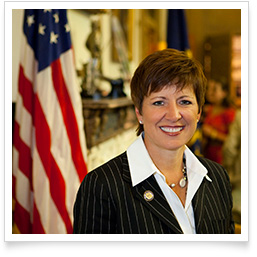 While economic momentum continues in portions of the state, the Indiana Chamber’s Indiana Vision 2025 Report Card and 10th annual workforce survey clearly illustrate challenges that need both short- and long-term attention.
While economic momentum continues in portions of the state, the Indiana Chamber’s Indiana Vision 2025 Report Card and 10th annual workforce survey clearly illustrate challenges that need both short- and long-term attention.
Among the findings: not enough skilled workers to meet economic needs; high rates of smoking and obesity that prove costly and impact quality of life; rising electricity prices; and a lack of statewide entrepreneurial activity and venture capital to support such efforts.
“There are a number of positive developments – both taking place every day and in our latest research – that are cause to celebrate,” says Indiana Chamber President and CEO Kevin Brinegar. “But it is also evident that a lack of workers, unhealthy lifestyle choices and limited Indiana-based funding to grow promising companies is keeping the state from realizing its full potential.”
The Indiana Vision 2025 Report Card compares the 50 states on 62 metrics related to 36 goals grouped by four drivers: Outstanding Talent, Attractive Business Climate, Superior Infrastructure, and Dynamic and Creative Culture.
Overall, Indiana did better on the 2017 version than the 2015 Report Card. Improvement occurred in 36 metrics – up from 28 two years ago; Indiana also declined in 16 rankings, which was three less than in 2015. The state remained the same or there was no updated data available in eight metrics; that number was 12 in 2015. (Two metrics couldn’t be compared.)
Some of Indiana’s top performances include:
- Business regulatory environment: Regulatory Freedom Index (2nd) and Small Business Policy Index (9th)
- Early education: A variety of top 10 ranks in NAEP (National Assessment of Education Progress) test scores, particularly at the fourth-grade level
- Exports: 10th among the 50 states, extending a string of similar rankings
The early education gains, however, are countered by a lack of workers in critical areas, including STEM (science, technology, engineering and mathematics). The Report Card reveals Indiana colleges and universities produce the third most science and technology degrees, but the state is only 42nd in the adult population with such degrees.
In addition, two troubling trends from the Indiana Chamber’s annual employer workforce survey continue:
- The number of respondents that left jobs unfilled due to under-qualified applicants increased to 47% – from 39%, 43% and 45% the last three years
- Those indicating that filling their workforce was their biggest challenge also increased – 29% after previous marks of 20%, 24% and 27%. Combine that with those answering next biggest challenge and the number soars to 79% – following totals of 72%, 74% and 76% the last three years
“Employers tell us, both through the survey and in their daily work experiences, that they simply can’t fulfill growth possibilities due to the lack of skilled workers,” Brinegar notes. “While many efforts are underway to prepare future employees and upgrade the abilities of those in the workforce today, those programs must be operated at the highest level of effectiveness and accelerated.”
The unhealthy lifestyle choices among Hoosiers carries a $6 billion annual price tag in increased health care costs and lost productivity. Indiana’s 20.6% adult smoking rate is an improvement over past years, but ranks 39th among all states. A six-rank improvement in adult obesity still leaves the state with a 36th-place rating and nearly a third of adults are considered obese.
Electricity prices, once considered a strong advantage for the most manufacturing-intensive state in the country, are now 29th for industrial customers and 26th for commercial. And while progress has been made on gathering data to avoid the water crises that have plagued others, the state must move quicker on regional planning and governance issues regarding future supplies.
In the important area of Dynamic and Creative Culture, momentum in central Indiana is overshadowed by poor statewide performance in a series of metrics, including: Kauffman Entrepreneurial Index (tied for 44th); job creation among new firms (44th); and venture capital (35th).
“Indiana must continue to make all areas of the state attractive destinations for workers and the companies that create jobs,” Brinegar concludes. “We’re encouraged by the regional cooperation that has emerged in recent years and look forward to enhancing our statewide performance and outcomes in future Report Cards.”
About Indiana Vision 2025
Mission: “Indiana will be a global leader in innovation and economic opportunity where enterprises and citizens prosper.” Indiana Vision 2025 was developed by a statewide task force of community, business and education leaders. The plan was released in early 2012. This third Report Card is available at www.indianachamber.com/2025.
About the Indiana Chamber Foundation’s Workforce Employer Survey
Sponsored by WGU Indiana, the 10th annual survey was conducted in partnership with Walker. More than 1,200 employers responded. Full results, including questions on workforce training and opioid use in the workplace, are available at www.indianachamber.com/education.
Statewide Discussions and Analysis
The 2017 Report Card and workforce survey will be the focus of six regional forums (to discuss the results, obtain local analysis and share best practices). The events are sponsored by Duke Energy Foundation; Indiana Michigan Power; NIPSCO, a NiSource company; and Vectren.
The forum schedule: June 6 (South Bend), June 7 (Hammond), June 27 (Sellersburg), June 28 (Indianapolis), June 29 (Evansville) and July 20 (Fort Wayne).



 The following post by WGU Indiana Chancellor Allison Barber was originally published on the
The following post by WGU Indiana Chancellor Allison Barber was originally published on the  Those involved in higher education are well aware of Western Governors University, and the school's unique approach to educating the Hoosier workforce. At a time when online schools face scrutiny from some, WGU is recognized as credible and a leader in its field.
Those involved in higher education are well aware of Western Governors University, and the school's unique approach to educating the Hoosier workforce. At a time when online schools face scrutiny from some, WGU is recognized as credible and a leader in its field. .gif) “I’m too busy.” “I’ve got family obligations.” “I work long hours.” “It’s too expensive.” “It’s not necessary.”
“I’m too busy.” “I’ve got family obligations.” “I work long hours.” “It’s too expensive.” “It’s not necessary.”